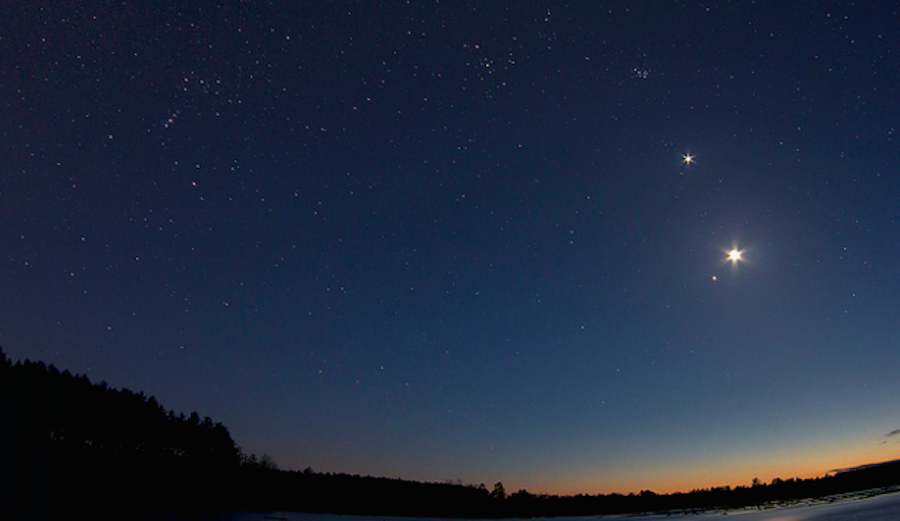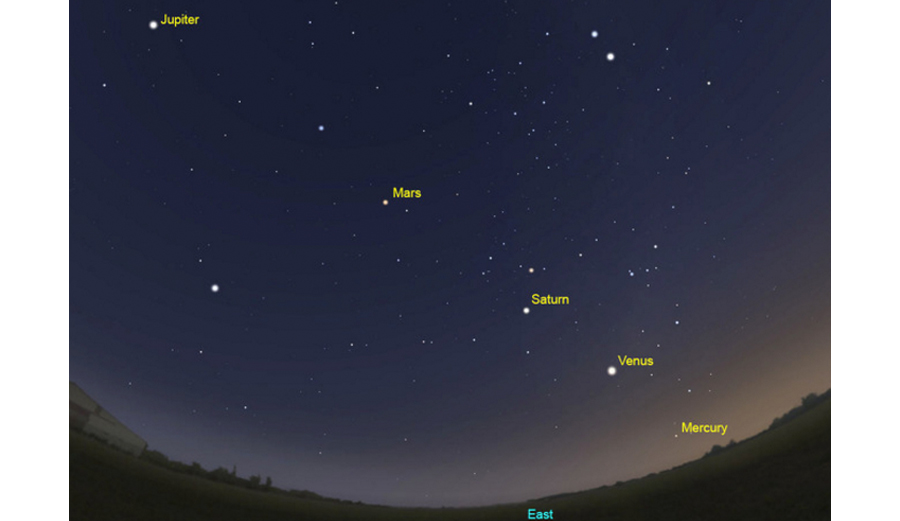
A planetary alignment from 2012. Photo: Flickr / TheKillerRabbit
It’s being called a “planetary roll call.”
For the first time in over a decade, five of the solar system’s visible-to-the-naked-eye planets will align in the night’s sky. Beginning on Wednesday of this week, Jupiter, Mars, Saturn, Venus and Mercury will appear together in the sky. The planetary phenomena will be visible without a telescope high in the northern sky to low in the east, early morning and lasting for nearly a month.
A helpful tool for finding the planetary alignment is the moon. At different periods throughout the month-long cycle, the moon will sit alongside the string of planets. Astronomer Tanya Hill explains via The Conversation:
“On January 28, the moon will be right next to Jupiter. Come February 1, the moon (in its Last Quarter phase) will be alongside Mars, then on the following morning it’ll sit just below the red planet. On the morning of February 4, the crescent moon will be near Saturn. Then on February 6, the moon will be alongside Venus and on February 7, a thin sliver of moon will sit below Mercury.”
Although this week’s interstellar lineup is a rare occurrence, it won’t be quite as singular as last September’s “Super Sunday Bloody Sunday Moon.” The orbits of all five visible planets haven’t intersected like this for over a decade, but they will again later this year in August.

Where to look for the line of planets. Photo: Museum Victoria/Stellarium

